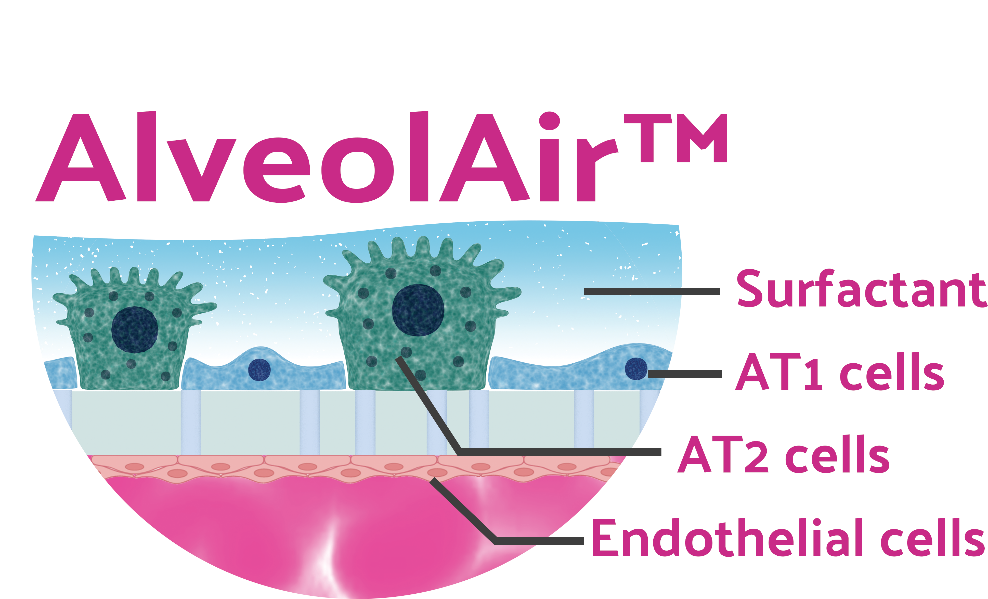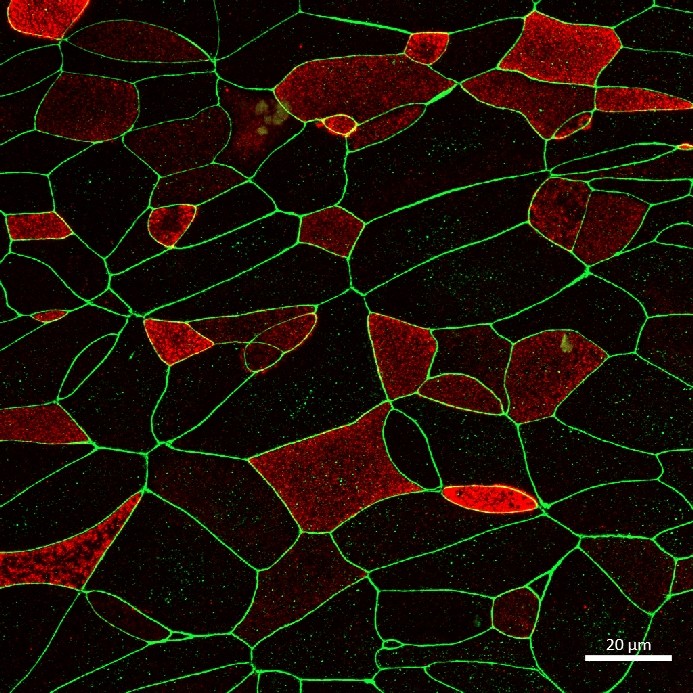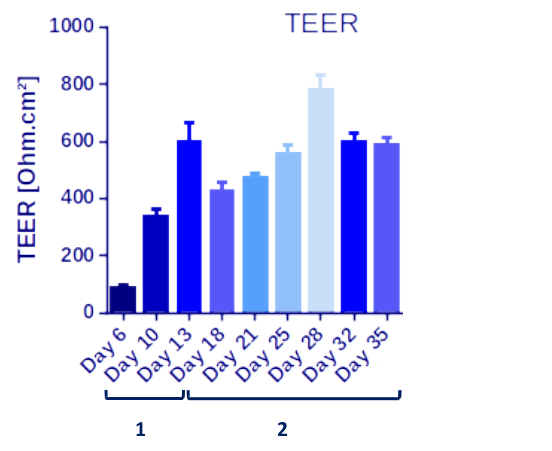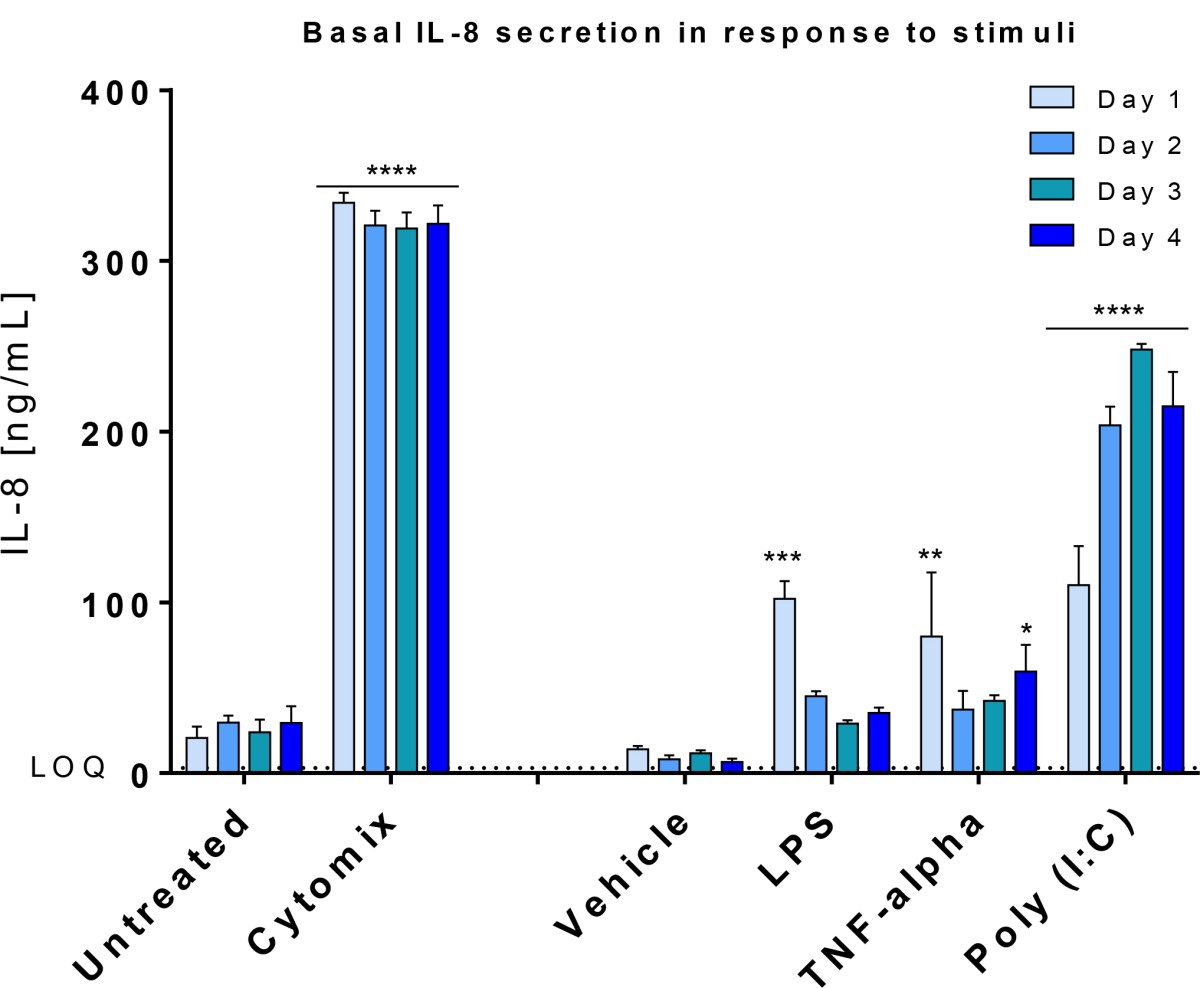AlveolAir™ is an in vitro tissue model of the alveolus epithelium cultured at the air liquid interface (ALI). Its stability over time make it a powerful tool for in vitro application on the research and tests on deep lung. AlveolAir™ tissue is composed of the following cell types:
- Pneumocytes type 1
- Pneumocytes type 2
- Endothelial cells







